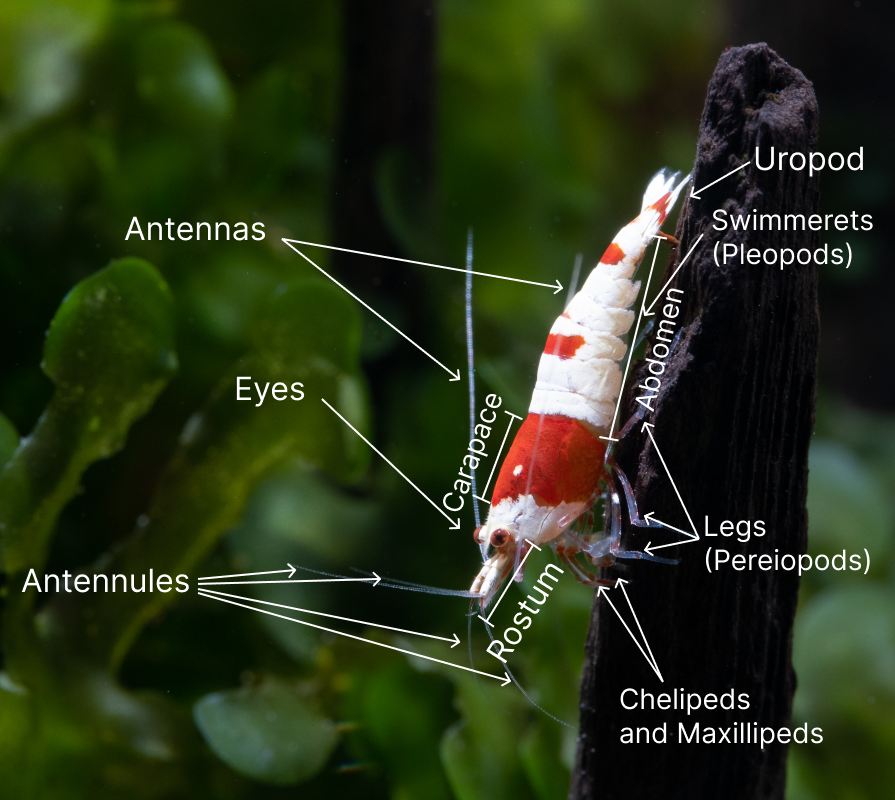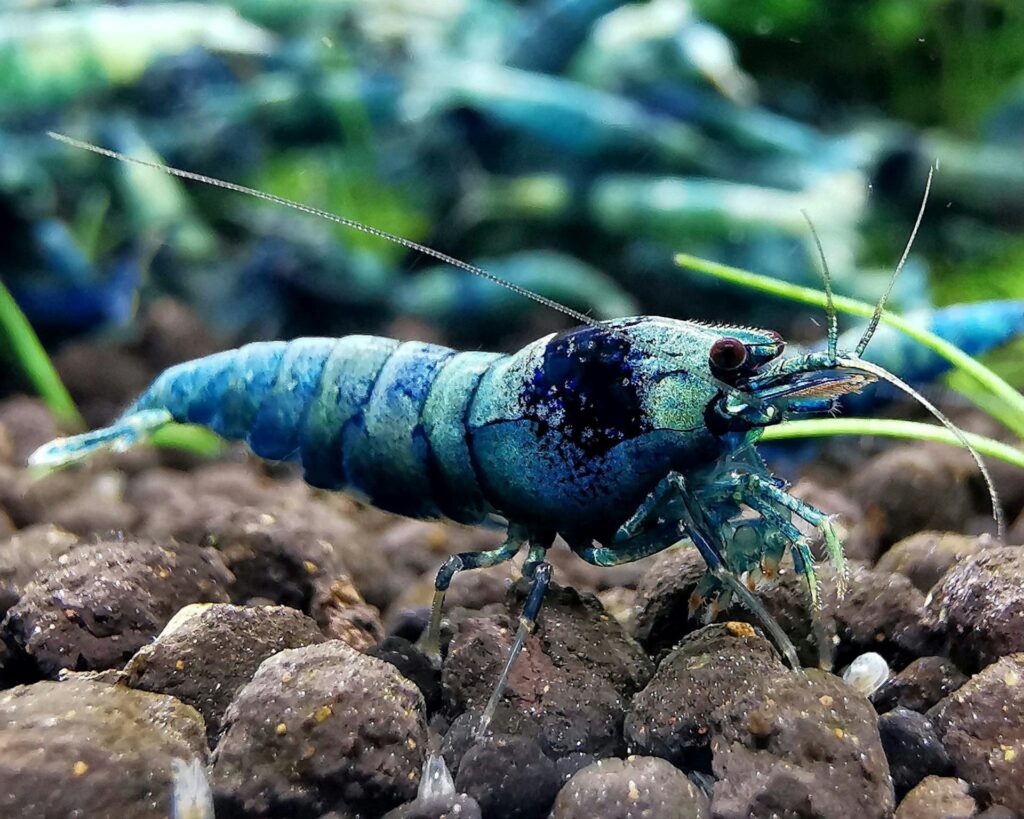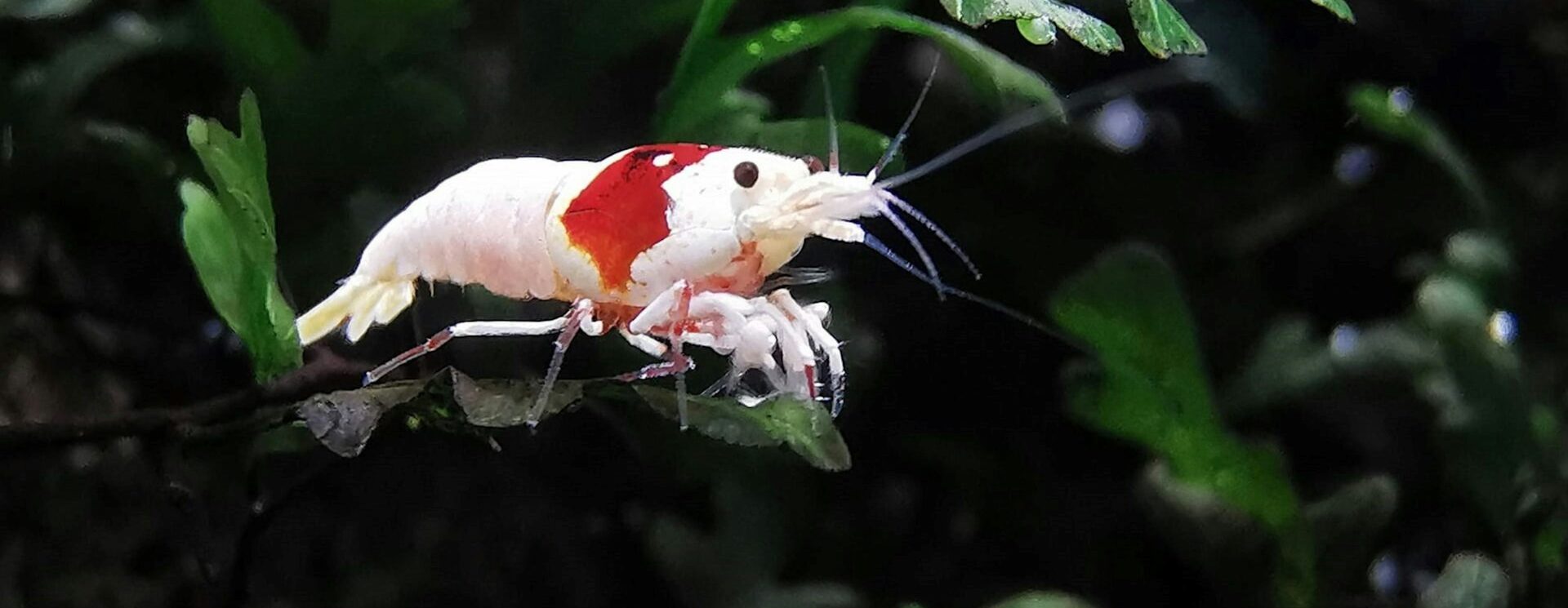Understanding the anatomy of Caridina dwarf shrimp is crucial for hobbyists and researchers. Knowledge of anatomical terms and functions helps in accurately describing symptoms, facilitating better communication and problem-solving.

Anatomy
Antennae
- Description and Functions
-
-
- Shrimp possess two pairs of antennae: the long antennae (first antennae) and the shorter antennules (second antennae).
- These sensory organs are used for navigation, detecting food, and sensing environmental changes.
-
- Long Antennae vs. Antennules
-
- The long antennae are primarily used for tactile sensing and detecting movement in the water.
- Antennules are shorter and play a key role in olfactory sensing, helping shrimp locate food and mates.
Carapace (Cephalothorax)
- Description and Parts Housed
-
- The carapace is the hard, protective shell covering the cephalothorax, which is the fused head and thorax region.
- It houses vital organs such as the heart, gills, and stomach, providing structural support and protection.
Abdomen (Pleon)
- Description and Segments
-
-
- The abdomen, or pleon, is a segmented, flexible part of the shrimp’s body, aiding in movement and swimming.
-
- Tergum and Pleuron
-
- Each abdominal segment has a dorsal part called the tergum and lateral parts called pleura (pleuron in singular).
- These segments allow the abdomen to bend and facilitate swimming.
Eyes
- Description and Functions
-
- Shrimp eyes are compound and located on movable stalks, providing a wide field of vision.
- They detect light, movement, and can differentiate colors, essential for avoiding predators and locating food.
Rostrum
- The rostrum is a forward-projecting extension of the carapace, located between the eyes.
- It provides protection to the eyes and sensory antennae and is used in species identification.
Legs
- Pereopods (Walking Legs)
-
-
- Shrimp have five pairs of pereopods used primarily for walking and handling food.
-
- Chelipeds (Claws/Grasping Legs)
-
-
- The first pair of pereopods is often modified into chelipeds, equipped with claws for grasping and manipulating objects.
-
- Maxillipeds
-
- Maxillipeds are appendages near the mouth, used to handle food and assist in feeding.
Swimmerets (Pleopods)
- Description and Functions
-
- Swimmerets, located on the underside of the abdomen, are used for swimming, creating water currents for respiration, and in females, carrying eggs.
- Male swimmerets are often modified for reproductive purposes.
Uropod (Tail Fan)
- Description and Telson
-
- The uropod, along with the telson (the central tail segment), forms the tail fan, which is used for quick backward escapes (tail flips).
- It provides stability and steering during swimming.
Eggs
- Location and Brooding
-
- Female Caridina shrimp carry fertilized eggs under their abdomen, attached to the swimmerets.
- The brooding process involves constant fanning and cleaning of the eggs until they hatch into larvae.

Exoskeleton
- Composition
- The exoskeleton of Caridina dwarf shrimp is primarily composed of chitin, a long-chain polymer that provides strength and flexibility. It also contains calcium carbonate, which adds rigidity and durability to the structure.
- Molting Process
- Molting is a critical process for growth in shrimp as their exoskeletons do not expand. During molting, the shrimp sheds its old exoskeleton and forms a new, larger one. This process involves the shrimp absorbing water to expand its body and split the old shell, allowing it to emerge with a softer exoskeleton that hardens over time.
- Coloration
- The color of the shrimp is not actually in the exoskeleton but in the layers beneath it. Pigments in the hypodermis give the shrimp its coloration, which can vary widely among species and can be influenced by diet, health, and environmental factors.










